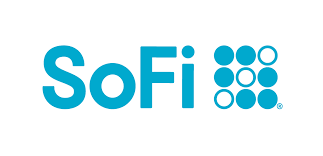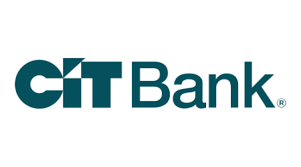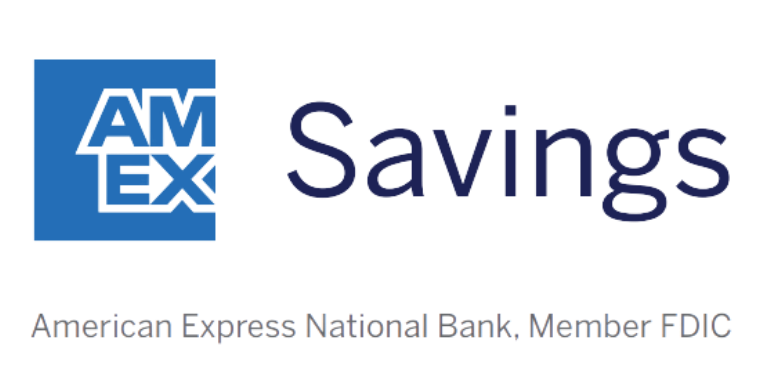There's a lot to think about when opening a new bank account, like what features it offers and how you're going to access your cash. But just as important is knowing how to transfer money to another bank. There are a few ways you can go about this, and we'll talk about each of them below.
How a bank transfer works
There are several ways to transfer your money from one bank account to another, whether the new account is at the same bank or a different one. Usually, all you have to do is tell the bank that currently has your money where you'd like it sent and it will move it for you. But to do this, you need to know two things: your routing number and your account number.
Routing number
Your routing number corresponds to the institution that's holding your money. You can often find your routing number by:
- Searching for it online
- Contacting the bank
- Finding it on your checks
Account number
Your account number identifies your personal account within that bank. This can be 10 or more digits long, depending on the bank.
You can find yours as the second number written on the bottom of your checks or you can contact your bank to ask. You may need to answer some personal questions to verify your identity before the bank will give you this information.
Compare savings rates
Make sure you're getting the best account for you by comparing savings rates and promotions. Here are some of our favorite high-yield savings accounts to consider.
| Account | APY | Promotion | Next Steps |
|---|---|---|---|

Open Account for SoFi Checking and Savings
On SoFi's Secure Website.
Rating image, 4.50 out of 5 stars.
4.50/5
Our ratings are based on a 5 star scale.
5 stars equals Best.
4 stars equals Excellent.
3 stars equals Good.
2 stars equals Fair.
1 star equals Poor.
We want your money to work harder for you. Which is why our ratings are biased toward offers that deliver versatility while cutting out-of-pocket costs.
|
up to 3.80%²
Rate info
You can earn the maximum APY by having Direct Deposit (no minimum amount required) or by making $5,000 or more in Qualifying Deposits every 30 days. See SoFi Checking and Savings rate sheet at: https://www.sofi.com/legal/banking-rate-sheet.
Min. to earn: $0
|
New customers can earn up to a $300 bonus with qualifying direct deposits!¹
|
Open Account for SoFi Checking and Savings
On SoFi's Secure Website. |

Open Account for CIT Platinum Savings
On CIT's Secure Website.
Rating image, 4.50 out of 5 stars.
4.50/5
Our ratings are based on a 5 star scale.
5 stars equals Best.
4 stars equals Excellent.
3 stars equals Good.
2 stars equals Fair.
1 star equals Poor.
We want your money to work harder for you. Which is why our ratings are biased toward offers that deliver versatility while cutting out-of-pocket costs.
|
4.10% APY for balances of $5,000 or more
Rate info
4.10% APY for balances of $5,000 or more; otherwise, 0.25% APY
Min. to earn: $100 to open account, $5,000+ for max APY
|
Earn a bonus of at least $225 after a one-time deposit of $25,000+.
Transfer a one-time deposit of $25,000-$49,999.99 for a bonus of $225. Transfer a one-time deposit of $50,000+ for a bonus of $300. Account must be opened with code PS2025 while this promotion lasts, and funded within 30 days. Bonus will be fulfilled within 60 days from the funding date. There is no period of time where the customer will be required to maintain the funds. Account must be open when bonus is credited. One bonus per account and primary customer. Bonus will be credited into the Platinum Savings Account that fulfills the funding requirement. Funding can be deposited all at once or incrementally.
|
Open Account for CIT Platinum Savings
On CIT's Secure Website. |

Open Account for American Express® High Yield Savings
On American Express's Secure Website.
Rating image, 4.00 out of 5 stars.
4.00/5
Our ratings are based on a 5 star scale.
5 stars equals Best.
4 stars equals Excellent.
3 stars equals Good.
2 stars equals Fair.
1 star equals Poor.
We want your money to work harder for you. Which is why our ratings are biased toward offers that deliver versatility while cutting out-of-pocket costs.
|
3.70%
Rate info
3.70% annual percentage yield as of April 10, 2025. Terms apply.
Min. to earn: $0
|
N/A
|
Open Account for American Express® High Yield Savings
On American Express's Secure Website. |
SoFi disclosure:
¹ New and existing Checking and Savings members who have not previously enrolled in Direct Deposit with SoFi are eligible to earn a cash bonus of either $50 (with at least $1,000 total Direct Deposits received during the Direct Deposit Bonus Period) OR $300 (with at least $5,000 total Direct Deposits received during the Direct Deposit Bonus Period). Cash bonus will be based on the total amount of Direct Deposit. Direct Deposit Promotion begins on 12/7/2023 and will be available through 1/31/26. See full bonus and annual percentage yield (APY) terms at sofi.com/banking#1.
² SoFi members who enroll in SoFi Plus with Direct Deposit or by paying the SoFi Plus Subscription Fee every 30 days or with $5,000 or more in Qualifying Deposits during the 30-Day Evaluation Period can earn 3.80% annual percentage yield (APY) on savings balances (including Vaults) and 0.50% APY on checking balances. There is no minimum Direct Deposit amount required to qualify for the stated interest rate. Members without either SoFi Plus or Qualifying Deposits, during the 30-Day Evaluation Period will earn 1.00% APY on savings balances (including Vaults) and 0.50% APY on checking balances. Only SoFi Plus members are eligible for other SoFi Plus benefits. Interest rates are variable and subject to change at any time. These rates are current as of 1/24/25. There is no minimum balance requirement. Additional information can be found at http://www.sofi.com/legal/banking-rate-sheet. See the SoFi Plus Terms and Conditions at https://www.sofi.com/terms-of-use/#plus.
³ We do not charge any account, service or maintenance fees for SoFi Checking and Savings. We do charge a transaction fee to process each outgoing wire transfer. SoFi does not charge a fee for incoming wire transfers, however the sending bank may charge a fee. Our fee policy is subject to change at any time. See the SoFi Checking & Savings Fee Sheet for details at sofi.com/legal/banking-fees/.
⁴ SoFi Bank is a member FDIC and does not provide more than $250,000 of FDIC insurance per depositor per legal category of account ownership, as described in the FDIC’s regulations.
Any additional FDIC insurance is provided by the SoFi Insured Deposit Program. Deposits may be insured up to $3M through participation in the program. See full terms at SoFi.com/banking/fdic/sidpterms. See list of participating banks at SoFi.com/banking/fdic/participatingbanks.
⁵ We’ve partnered with Allpoint to provide you with ATM access at any of the 55,000+ ATMs within the Allpoint network. You will not be charged a fee when using an in-network ATM, however, third-party fees incurred when using out-of-network ATMs are not subject to reimbursement. SoFi’s ATM policies are subject to change at our discretion at any time.
⁶ Early access to direct deposit funds is based on the timing in which we receive notice of impending payment from the Federal Reserve, which is typically up to two days before the scheduled payment date, but may vary.
⁷ Overdraft Coverage is limited to $50 on debit card purchases only and is an account benefit available to customers with direct deposits of $1,000 or more during the current 30-day Evaluation Period as determined by SoFi Bank, N.A. The 30-Day Evaluation Period refers to the “Start Date” and “End Date” set forth on the APY Details page of your account, which comprises a period of 30 calendar days (the“30-Day Evaluation Period”). You can access the APY Details page at any time by logging into your SoFi account on the SoFi mobile app or SoFi website and selecting either (i) Banking > Savings > Current APY or (ii) Banking > Checking > Current APY. Members with a prior history of non-repayment of negative balances are ineligible for Overdraft Coverage.
Types of bank-to-bank transfer
There are four ways you can transfer funds between banks. Here's a closer look at the pros and cons of each.
Electronic transfers
Electronic transfers are the simplest option for most people and they're free. All you need is:
- An online account with your current bank
- The routing and account numbers for your new bank account
When you do an electronic transfer to another account at the same bank, it's often instant. But when you transfer funds to another bank, it can take up to three business days.
Plus, many banks limit how much their customers can transfer per day or per month. Oftentimes, these limits are several thousand dollars, so they should be enough for most people. But those looking to transfer large sums at once may have to explore some other options.
Pros of electronic transfers
- Free
- Safe to use
Cons of electronic transfers
- May take a couple of days to transfer
- Not great for large single-day transfers
How to transfer money to another bank electronically
If you want to electronically transfer funds to another bank, follow these steps:
- Log into your online banking account at your current bank.
- Select the Transfer option. If you can't find this, reach out to your bank for assistance.
- Enter the routing and account number for your new bank account.
- Select how much you'd like to transfer.
- Confirm the transfer and wait for the funds to show up in your new account.
Wire transfers
Wire transfers are an alternative if you need to access your funds quickly or if you need to transfer large sums at once. These are similar to electronic transfers, but they happen much faster. Most domestic transfers can be processed on the same day.
TIP
Many banks charge fees for outgoing wire transfers and some charge for incoming wire transfers as well. Wire transfers can also be difficult to stop if you change your mind after you've initiated them.
Wire transfer pros
- Quick
- Secure
- Can transfer large sums at once
Wire transfer cons
- Fees
- Can be difficult to cancel
How to transfer money to another bank with a wire transfer
If you want to move funds via wire transfer, take these steps:
- Log in to your online banking account or mobile banking app.
- Choose Wire Transfer.
- Enter the routing number and account number for your new bank.
- Enter the amount you want to transfer.
- Confirm the transfer.
Zelle is a popular money transfer app used by many U.S. banks and credit unions. It doesn't have fees, and transfers between banks are often instant.
Learn more: Full Zelle Review
Check transfer
If you're not comfortable banking online, you may decide to move your funds via a check transfer. This is where you write a check from your current bank account and deposit that check into your new bank account. You need a checkbook to do this and your current account must offer check-writing capabilities.
Security is also a little more of a concern here because if you lose your check, there's a possibility that someone else could find it and use it to steal your money. Another issue for those depositing large checks is that you may only get access to a portion of your funds right away. It can take a few days for your bank to release all the funds to you.
Check transfer pros
- No fees
- Can transfer larger sums
Check transfer cons
- Security risk if you lose your check
- May not have access to all your funds right away
- Not available if your current account doesn't offer check-writing capabilities
How to transfer money to another bank with a check transfer
Here are the steps to transfer your money to another bank with a check:
- Fill out your check with your name and the amount you'd like to transfer.
- Sign and date the check.
- Take a photo of your check and remote deposit it using your new bank's mobile banking app.
- Or you can take it to your new bank's branch, fill out a deposit slip for your account number, and give this to a bank teller.
- Wait for the funds to show up in your new bank account.
Things to keep in mind when transferring money between banks
Here are a couple things to keep in mind when moving money between banks.
Always verify that you've entered your information correctly
Before you send money using any of the methods above, make sure you've entered all of your information correctly, especially your account number. If you accidentally transfer your funds to someone else, you may not be able to get them back.
If you do inadvertently send money to the wrong place, reach out to the bank to see if you can stop the transfer before it completes.
Watch out for excess withdrawal fees from savings accounts
When moving your money out of a savings account, you could face excess withdrawal fees if you make more than six withdrawals in a month. This is because of a federal law known as Regulation D that required this limitation on savings accounts.
It's worth noting that not all withdrawals are created equal. The six monthly withdrawal rule usually only applies to "convenient" withdrawals, such as:
- Electronic transfers
- Check withdrawals
- Automatic bill pay
But withdrawing money at a bank branch or taking cash out at an ATM doesn't count toward these limits.
If you have any questions about transaction limits or what kind of fees you could face for moving money out of your savings account, reach out to your bank to ask.
Many people are missing out on guaranteed returns as their money languishes in a big bank savings account earning next to no interest. Motley Fool Money's top savings account picks can earn you more than 10x the national average savings account rate.
FAQs
-
The best way to transfer your money depends on your needs and goals. For most people, electronic transfers are the way to go because they are safe and free.
-
Wire transfers can move your money quickly, but you'll usually pay a fee for this convenience. Some money transfer apps also allow for instant transfers, again at a cost.
-
Transferring your money electronically is usually pretty safe, assuming you've got the routing and account numbers correct.
We're firm believers in the Golden Rule, which is why editorial opinions are ours alone and have not been previously reviewed, approved, or endorsed by included advertisers. Motley Fool Money does not cover all offers on the market. Motley Fool Money is 100% owned and operated by The Motley Fool. Our knowledgeable team of personal finance editors and analysts are employed by The Motley Fool and held to the same set of publishing standards and editorial integrity while maintaining professional separation from the analysts and editors on other Motley Fool brands. Terms may apply to offers listed on this page. APYs are subject to change at any time without notice.